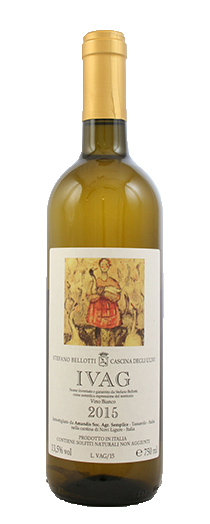Think of a grape variety and you will probably envision it in its most basic iteration. Gamay? Think bubblegum and fruit pastilles. Malbec? Think chocolate. Chardonnay? Think warm buttered toast.
This is part of a new occasional series where we look at some of the sacred cows and misshapen sheep in the wine industry and challenge received wisdom and pr gimmickry.
Having evolved from the very very antsy caterpillar to a beatific insouciant butterfly, I am less prone to go into rant mode about the teeny things that exercise me about the wine trade. Not because there are any fewer things that annoy me, but more because I have finally realised that one more vociferous opinion doesn’t really improve the quality of the existent white (wine) noise.
So, what’s the deal with…World [insert grape variety] Day?
I am sure we might be able to fill the entire calendar with individual grapes that might merit our attention/adulation, but what exactly would be the point? Which begs the question why some varieties are exalted now. Are we supposed to rush to the nearest shop and purchase a bottle to celebrate World Pinotage Day or World Carmenere Day? Is it vital that some of the better known varieties such as Grenache and Pinot Noir require an extra push? Should we celebrate a grape because a body has arbitrarily decreed that this is the day for it?
Our choices of what to drink are more determined by the weather, what we are going to eat, and the company we are with. If we had to slavishly follow all the pr stunts, we would never drink what we wanted to.
The obsession with marketing wine by its grape variety started in the 80s perhaps when wines from the New World came to prominence. The grape variety became the shorthand for the identity of the wine; it created a common denominator of flavours to search for and find.
Of course, easy recognition only serves to diminish the variety in question. It is pandering to taste profiling.
Winemaking began to track a perceived demand for a particular style, which made that demand grow further, which in turn encouraged winemakers to exaggerate their flavour profiling. You can buy a yeast for this, or a toasty oak barrel for that, and avail yourself of numerous additives and oenological tropes to manipulate juice to a common commercial goal.
We are told that typicity can only be achieved if the wine is clean, implying that typicity is all about correctness. This is the equivalent of stating “this wine is right and, contrariwise, this wine is wrong.” This is like saying that received pronunciation is the way we should all talk or that English spelling is inherently superior to American. I submit that what we currently accept as the flavour norm in wine may be far removed from the original perception of typicity. Over the decades wines have changed because of modern (often industrial) farming techniques and also radically altered by vinification methods designed to “clean up” the wine. Espousing this methodology isn’t progress; it is just one of many approaches to winemaking. I normally cite Sauvignon as a grape that has been diluted by poor farming practice (chemical viticulture with grapes picked too early and with very high yields) and highly interventionist vinification (cultured – and flavoured – yeasts, temperature control, high sulphur regime, stopped malos) – no wonder it is difficult to discover examples that truly convey the sense of terroir and no wonder it is not perceived as a noble grape variety.
Riesling is another grape variety that has become a modern monoform. In the winemaking, it is invariably subjected to high levels of added sulphites either to stop malo or to fix reduction. It is also often cold-stabilised and filtered. But, like any grape variety it can be handled differently. Why should there not be phenolic extraction (even skin maceration), or oxidative winemaking? The grapes, after all, possess the potential to yield an entirely different style of wine.
Think of a grape variety and you will probably envision it in its most basic iteration. Gamay? Think bubblegum and fruit pastilles. Malbec? Think chocolate. Chardonnay? Think warm buttered toast. In Jonathan Nossiters “Natural Resistance” the late Stefano Bellotti observed how the modern commercial culture of homogenisation (product profiling) was cramping the style of vignerons who truly wanted to reflect terroir and vintage and make authentic wines. Tasting panels were imposing standards so that the appellation might be easily recognised and calling it “typicity”, when typicity should connote the very opposite i.e. originality and singularity, a wine that is in and of itself. Not a varietal, not a bland pan-regional commercial style.

In 2015, Stefano Bellotti’s entry-level Gavi (Cortese), made from grapes that don’t make the single vineyard bottlings along with other vineyard selections, was refused the appellation due to its colour. This was a direct result of making an unfiltered, unadulterated product (most Gavis are usually heavily filtered, completely transparent and a pale straw colour).
When those grapes capture the essence of the vineyard and the specifics of terroir, then they become of interest. If they are merely a vessel for winemaking technique, then what they are is less important than how they are made.
I think about wine in terms of style and the shape that it makes in my mouth. Sometimes I crave laser-sharp and crisp, at others the amplitude and textural warmth of a macerated wine. I try not to put wine in small descriptive boxes and give the wine a chance to express more than merely being a conduit for varietal character. In that respect, every day is about discovering a new wine and should be celebrated thusly!

